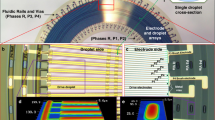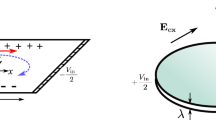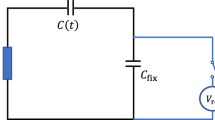Abstract
THE description by Van Wyk and Kühn1 of their corona motor reminded me that a number of years ago I made an electrostatic motor, in basic concept not unlike their motor, but fitted with metal electrodes on the moving member, to increase the charge-holding capacity (Fig. 1). This enabled the motor to deliver a perceptible power output at a moderate speed. By the kindness of the Tyneside Society of Model Engineers, the component parts were machined in their Manors premises and the completed motor was demonstrated to the Experimental Section of the Society in the winter of 1949.
This is a preview of subscription content, access via your institution
Access options
Subscribe to this journal
Receive 51 print issues and online access
$199.00 per year
only $3.90 per issue
Buy this article
- Purchase on Springer Link
- Instant access to full article PDF
Prices may be subject to local taxes which are calculated during checkout
Similar content being viewed by others
References
Nature, 192, 649 (1961).
Model Engineer Handbook Series (Percival Marshall, c. 1914).
Author information
Authors and Affiliations
Rights and permissions
About this article
Cite this article
STRINGER, J. Electrostatic Motors. Nature 193, 264–265 (1962). https://doi.org/10.1038/193264a0
Issue Date:
DOI: https://doi.org/10.1038/193264a0
This article is cited by
-
Thermocouple Electric Motors
Nature (1962)
Comments
By submitting a comment you agree to abide by our Terms and Community Guidelines. If you find something abusive or that does not comply with our terms or guidelines please flag it as inappropriate.



